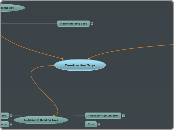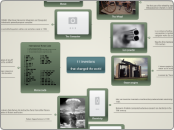science and technology
World War Two
When World War 2 started in 1939, some soldiers still rode horses into battle. Trenches were dug, and battleships that had been used during World War 1 were pressed into service. But things changed enormously over the six years of the war. Jet-powered aircraft, radar detection systems, the atomic bomb, and television were just a few of the technological developments that changes the world forever.
During the war, Canadian forces changed their machinery to meet wartime needs. At the beginning of the war, few airplanes and no armored vehicles or artillery pieces were made in Canada. By the end of the war, the country was producing 14 000 tanks, 16 000 artillery pieces, and 4000 airplanes a year. In addition, Canadian factories built 815 729 military vehicles, including jeeps and tanks, over the course of war.
World War One
Mechanized warfare depends on machines, especially powered by gasoline or diesel engines. Tanks, aircraft and submarines were forms of mechanized warfare that were used in battle for the first time in world war one.
Most of the technology used in world war 1, was improved from earlier inventions. Early forms of machine guns, tanks, aircraft and submarines existed before the war.
Radios: During the war, radio communication became important, especially on ships. Transmitting and receiving stations were set up at strategic points on land so the messages could pass from station to station along a network.
Telephones: Telephones played a major role in military communications. Suddenly, commanders could pick up a field telephone, talk directly to officers on the battle lines, and give oral orders immediately.
Submarines: The allies used the convoys system to try to protect their ship from U-boats. But they also created a new kind of ship, an anti-submarine destroyer. Destroyers were speedy ships that carried special equipment that could find submarines underwater. Once a submarine was found, a destroyer would drop a depth charge - a bomb that exploded underwater- on it.
Post- war uses of technology includes newer and safer versions of guns to the police and armed forces, airplane development for passenger aircraft, and submarines are used to underwater explorations.
Airplanes: At first, airplanes were used only for reconnaissance: to gather information about what the enemy was doing. Pilots might, for example, fly over enemy trenches to take pictures. These early planes carried no weapons - no guns or bombs. By the end of the war, airplane technology had improved tremendously. Special fighter aircraft, such as the British Sopwith and the German Fokker, had been designed to shoot down enemy planes. Other planes were developed specially to carry bombs.
Tanks: Tanks developed form the same technology as bulldozers and tractors. Tanks were designed to cross trenches and plow through barbed wire and other obstacles. Their metal armor protected them from machine-guns fire and shrapnel, the pieces of metal that spray in all directions when artillery shells explode.
Chemical weapons: Many poison gases were used for the first time in world war 1. Chlorine gas was one of the most deadly. It burned eyes and lungs, causing victims to choke, gag, and suffocate to death. Though the Germans were the first to use chlorine gas, both side launched attacks during war. As a result, both sides equipped their troops with gas masks.
Machine guns: At first, the machine guns used in the war were so heavy that they could not move easily. But advances in machine gun technology produced weapons that were lighter and more portable.
20's 30's
One of the reasons the 1920's are sometimes called Canada's first modern decade is because advances in technology were starting to change the way Canadians lived their day-to-day lives. World War 1 had speeded ip the development of many new technologies, such as the telephone, radio, and automobile. When the war ended, companies quickly started making this new products for eager buyers, who were fascinated by the machines and gadgets that promised to make their lives easier and more fun.









